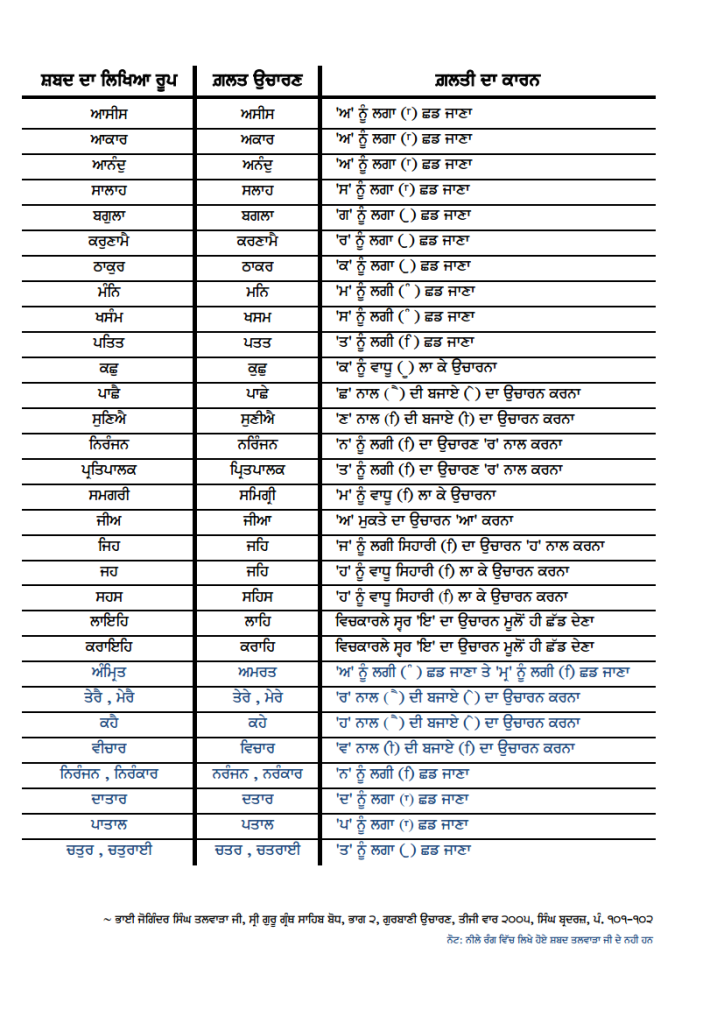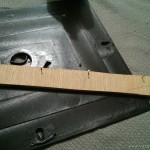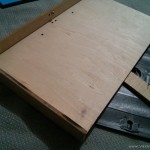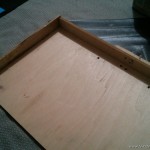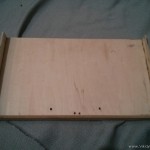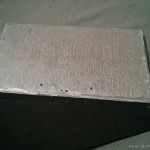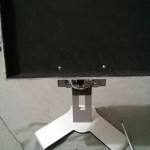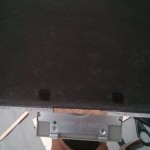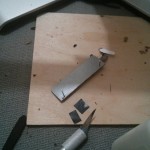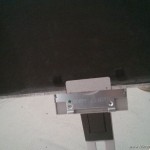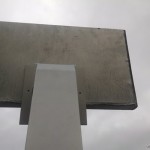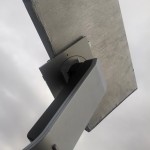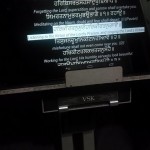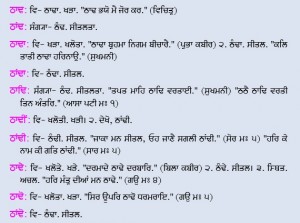Hold up.. what should you do while reading Gurbani?
Vaheguroo Ji Ka Khalsa Vaheguroo Ji Ki Fateh
Today, I’d like to take a moment to pause and reflect on an important topic: Pausing.
In Gurbani, we don’t have any commas. However, that doesn’t mean that every line is just read continuously. On the contrary, there are inherent pauses in each line and we ourselves have to know when to pause while reading. Correct bisraams (pauses) help to convey the right meaning, while an incorrect bisraam can completely change the meaning of the tuk(line). Most of the time the pause is intuitive and we can naturally tell where it is as we read. Other times we have to make a conscious effort to figure it out and understand. This is important because a slight difference in bisraam can convey a message completely opposite to a line’s actual meaning.
For the sake of getting this point across – Here are some examples where incorrect placement/pronunciation of a comma can completely change the intended meaning.
English example:
- “Woman, without her, man is worthless.”
- “Woman, without her man, is worthless.”
Two entirely different meanings conveyed just by changing the comma placement (Bisraam)!
Punjabi example:
- ਰੋਕੋ ਨਾ, ਜਾਣ ਦਿਓ। “Roko na, Jaan deo” – Don’t stop them, let them go.
- ਰੋਕੋ, ਨਾ ਜਾਣ ਦਿਓ. “Roko, na Jaan deo” – Stop them, don’t let them go.
Example from Gurbani (commas added for illustration):
ਗੁਰੁ ਅਰਜੁਨੁ, ਘਰਿ ਗੁਰ ਰਾਮਦਾਸ, ਭਗਤ ਉਤਰਿ ਆਯਉ ||੧|| ( ਅੰਗ ੧੪੦੭)
In the House of Guru Raam Daas, the devotee of the Lord, Guru Arjun was born. ||1||
If we put the bisraam after ghar and say “Gur Arjun Ghar, Gur Raam Daas..” it would mean that Guru Raam Daas ji was born into the house of Guru Arjun Dev Ji, which doesn’t make any sense!
So how do we know where the bisraam is? Usually our doubts can be cleared by stopping and doing vichar on the meanings of the lines or reading some steeks/meanings. Sometimes it is not clear or there are conflicting translations. We can rely on research and translations of previous Gursikhs and the context of the shabad to try our best to understand where the pause is. Typically there we can tell if the meaning is contrary to Gurmat and therefore not likely. We may not always be correct, because our understanding is limited and Gurbani is above and beyond our intellect. However, we should still make our best effort.
This is especially important for Keertanis – they should create and adjust their tunes based on the Shabad, rather than fit the Shabad to the tune. Unfortunately most of us do the latter, often without realizing it. Even if it doesn’t make a huge difference to the meaning, it is still important because we are supposed to be using music as a tool to bring out the mood and meaning of a particular pangti (line). Some times we sing a line for the first time on stage, without knowing the correct pauses and just separate it according to the tune or taal. Ideally we should have read and understood the shabad before singing it. Fortunately, knowledgeable Gursikhs will often correct us so that we can sing it properly.
The following is a list of some common bisraam mistakes that people usually make because they aren’t often discussed or are easily overlooked. Some of these I have observed during kirtan or paath, while others I have learnt from my father or other Gursikhs. I have added spaces in the lines to signify where a pause “should” be.
ਗਾਵੈ ਕੋ ਜੀਅ ਲੈ ਫਿਰਿ ਦੇਹ || (ਅੰਗ ੧)
Some sing that He takes life away, and then again restores it.
If we put the bisraam after jeea, or the third word in every line of this pauri, as is commonly done, we would say “some sing of life, takes then gives.” Clearly “take” goes with “life”, so they should be together as one phrase. It should be “Gaavai Ko, Jee Lai Phir De”. Most of the lines in this pauri have the bisraam after “Ko”. (ex: Gavai Ko, Gun Vadiaayeea Char. Gaavai Ko, Vidhia Vikham Veechar)
ਚਰਨ ਸਤਿ ਸਤਿ ਪਰਸਨਹਾਰ || (ਅੰਗ ੨੮੫)
His Lotus Feet are True, and True are those who touch Them.
Many people read these together as one word, like “Charan SatSat Parsanhar”. But one sat is for charan, the other is for parsanhar. The pause in between makes that clear. This is the same for all of the other lines in this padhaa of Sukhmani Sahib.
ਹਰਿ ਜੀਉ ਗੁਫਾ ਅੰਦਰਿ ਰਖਿ ਕੈ ਵਾਜਾ ਪਵਣੁ ਵਜਾਇਆ || (ਅੰਗ ੯੨੨)
The Lord placed the soul to the cave of the body, and blew the breath of life into the musical instrument of the body.
For most of my life I had been reading this all together and thought “Har Jeeo” meant “Respected Lord”. It actually means that Vaheguru places the soul(jeeo) into this body cave. There is a bisraam after “har”, as in “hari (ne), jee guffa (de) andar rakh ke..”.
ਸੁਣਿ ਕੈ ਜਮ ਕੇ ਦੂਤ ਨਾਇ ਤੇਰੈ ਛਡਿ ਜਾਹਿ || ਅੰਗ ੯੬੨
Hearing Your Name, the Messenger of Death runs away.
We often read this all together, or split it in the middle. However because Guru sahib put the words in an unconventional order (almost backwards), with the common pause style the meaning would be wrong. To me, when you say “naae terai chhad jaae” it sounds like it would mean “they left your Name”. But the meaning is “by listening to your name, the jamdoots (pause) leave you”. So in my opinion there should be a bisraam before chhad jaae – “Sun Kai (Jam Ke Doot) Nae Terai, Chhad Jaae”.
ਬਿਨੁ ਨਾਵੈ ਮਰਿ ਜਾਈਐ ਮੇਰੇ ਠਾਕੁਰ ਜਿਉ ਅਮਲੀ ਅਮਲਿ ਲੁਭਾਨਾ ||੨|| ਅੰਗ ੬੯੭
Without the Name, I would die; the Name of my Lord and Master is to me like the drug to the addict. ||2||
This is another one that always bothered me, because most tunes separate this as “Bin Naavai Mar Jaeeyai Mere Thakur”, Which almost sounds like “my thaakur dies without naam”. But it is not my thaakur who is dying, it’s me! So to make that clear I would have a short pause before mere thakur: “Bin Naavai Mar Jaeeyai, Mere Thakur, Jio Amli Amal Lubhana”.
ਸੰਤ ਕਾ ਦੋਖੀ ਭੂਖਾ ਨਹੀ ਰਾਜੈ || ਅੰਗ ੨੮੦
The slanderer of the Saint is hungry and is never satisfied.
If we put the bisraam after nahi, the whole meaning changes. “Sant Ka Dokhi Bhooka Nahi, Raaje” means the saint’s slanderer is not hungry, he is satisfied. If you put it after “bhooka”, it means he is hungry, not satisfied.
ਬਿਨੁ ਗੁਰ ਮੁਕਤਿ ਨ ਆਵੈ ਜਾਵੈ ॥ Panna 1040
Without the Guru, no one is liberated; coming and going in reincarnation continue.
Very similar to the previous example, if you put the bisraam in the middle, one might say “Bin Gur Mukat, Na Aavai Jaavai”. That would mean “without the guru we are liberated, we don’t come and go in reincarnation”. But according to gurmat we know that is not true. So it must be “Bin Gur, Mukat Naa (pause), Aavai Jaavai. “Without the guru, you are not liberated. You come and go..”
ਕਰਮਿ ਮਿਲੈ ਨਾਹੀ ਠਾਕਿ ਰਹਾਈਆ ||੩||
They are received only by Your Grace. No one can block them or stop their flow. ||3||
One more very similar example. If the bisraam is after naahi, the meaning becomes “spiritual powers do not come through your grace, and they can be stopped. The correct pronunciation would be “Karam Milai, (pause) Naahi Thaak Rahaaeeya”.
ਨਾਨਕ ਪਾਪ ਕਰੇ ਤਿਨ ਕਾਰਣਿ ਜਾਸੀ ਜਮਪੁਰਿ ਬਾਧਾਤਾ ||੪||੨||੧੪||
O Nanak, she commits sins for their sake; she shall go, bound and gagged, to the City of Death. ||4||2||14||
I recently heard this line being sung as “Nanak Paap Kare, Tin Kaaran.. Jaasee Jampur Baadhata”. Which is basically saying “Nanak commits sins, for them..” But Nanak is not the one committing sins, the sinner who is being referred to was actually mentioned in the previous line. The actual bisraam is after Nanak – “Nanak (pause), Paap Kare Tin Kaaran..” In Gurbani, most pangtees that start with Nanak have a pause right after Nanak because it means “Nanak is saying”. By attaching the word Nanak to the phrase following it, we risk (unknowingly) disrespecting Guru Sahib!
I hope this was helpful to some of you. If you would like to learn more about Gurbani pronunciation and viakran, check out the video below by Giani Kulwinder Singh from UK. He talks about pausing as well as the poetic weight/balance and grammar used in Gurbani.
Please forgive me for any mistakes. If you have any additional points, comments, or examples, please post them in the comments below!
-Vikram Singh
Posted in Sikhi and tagged baanee, baani, banee, gurbanee, gurbani, gurmat, gurmukhi, keertan, kirtan, pronounciation, punjabi, rahao, religion, sikh, sikhi, sikhism, veechar, viakran, vicharwith no comments yet.
3 Tips to Improve your Gurbani Pronunciation
Today I’d like to talk about 3 simple ways in which one could improve their Gurbani Ucharan. When we read Gurbani, its important to pay attention to the words and how they are spelled. A small mistake in pronunciation could change the meaning entirely, so we should try our best to be shud(clear) when reading Gurbani. Correct pronunciation is even more important when someone else is listening, because that small mistake on our part could cause a larger misunderstanding for the listener(s) since they cannot see the words themselves. If you have taken santhiya, hopefully you will already know these things and pay attention to them. If you haven’t, I hope you can learn from this article and improve. Either way, I hope everyone can find something useful here.
I’m not going to write about any complex topics in here like viakran(grammar), parts of speech, singular/plural, masculine/feminine etc. or controversial stuff like whether or not we should pronounce bindis and all that. These are just 3 simple tips that I think everyone across the board can agree on, no matter your background. I’m not an expert by any means, these are just basic things I have learned and observed over the years so I wanted to share them for everyone’s benefit. Each “tip” is followed by examples from common Nitnem baanis.
1) Know the difference between laav/laa and dulaava/dulaiya. This is very important and unfortunately one of the most common mistakes I hear everyday. People just don’t seem to know the difference, or they don’t care to pay attention. If you have taken santhia you should know that one makes an “ay” sound such as in “hay” or “bay” and the other makes an “ai” sound such as in “cat” or “mat”. Majority of the people I’ve heard read Gurbani mispronounce these and don’t differentiate between them I would like to very briefly narrate a sakhi here to explain the importance of this point. I’m sure you can find this saakhi online in much more detail if interested. But basically, once time Guru Sahib asked a sikh to recite Gurbani for him, and the sikh was doing a wonderful job and Guru sahib was very happy with him. Then he got to the line
ਕਰਤੇ ਕੀ ਮਿਤਿ ਕਰਤਾ ਜਾਣੈ ਕੈ ਜਾਣੈ ਗੁਰੁ ਸੂਰਾ ||੩||
karathae kee mith karathaa jaanai kai jaanai gur sooraa ||3||
Only the Creator Himself knows His own extent; or the Brave Guru knows. ||3||
But he pronounced kai as ke. Guru sahib stopped him right there and ordered sikhs to give him some sort of punishment (according to some accounts he was “caned” or slapped), because by saying “kay”, the meaning of the line changed from “…. or the Brave Guru knows” to “…what does the Guru know?”, meaning the Guru knows nothing. This seemingly small mistake translated into a huge insult toward Guru Sahib. Although I’m not sure how accurate this incident is because we know Guru Sahib is forever merciful, it still illustrates how important it is to pronounce Gurbani correctly, to the best of our ability.
More examples:
ਮੰਨੇ ਕੀ ਗਤਿ ਕਹੀ ਨ ਜਾਇ ||
ma(n)nae kee gath kehee n jaae ||
(Japji Sahib) Notice the first manae pauri in Japji Sahib uses Manae
ਮੰਨੈ ਸੁਰਤਿ ਹੋਵੈ ਮਨਿ ਬੁਧਿ ||
ma(n)nai surath hovai man budhh ||
(Japji Sahib) while the next 3 pauris use Manai. The difference is due to meaning.
ਕਹੈ ਨਾਨਕੁ ਅਨੰਦੁ ਹੋਆ ਸਤਿਗੁਰੂ ਮੈ ਪਾਇਆ ||੧||
kehai naanak ana(n)dh hoaa sathiguroo mai paaeiaa ||1||
Says Nanak, I am in ecstasy, for I have found my True Guru. ||1||
(Anand Sahib) Many people say Kahay, correct pronunciation is kahai.
ਸੁਣਿ ਕੈ ਜਮ ਕੇ ਦੂਤ ਨਾਇ ਤੇਰੈ ਛਡਿ ਜਾਹਿ ||
sun kai jam kae dhooth naae thaerai shhadd jaahi ||
Hearing Your Name, the Messenger of Death runs away.
(Rehraas Sahib) first one is kai, second is kay. They have different meanings.
ਸੁਣਿ ਵਡਾ ਆਖੈ ਸਭੁ ਕੋਇ ||
sun vaddaa aakhai sabh koe ||
Hearing of His Greatness, everyone calls Him Great.
(Rehraas Sahib) Many people say aakhay, correct pronunciation is aakhai.
ਤਿਤੁ ਸਰਵਰੜੈ ਭਈਲੇ ਨਿਵਾਸਾ ਪਾਣੀ ਪਾਵਕੁ ਤਿਨਹਿ ਕੀਆ ||
thith saravararrai bheelae nivaasaa paanee paavak thinehi keeaa ||
In that pool, people have made their homes, but the water there is as hot as fire!
(Rehraas Sahib) many people say Sarvarray, correct pronunciation is sarvarrai.
2) Know the difference between Siharee and Biharee. The former has is an I sound, such as in “bit” or kit”, while the latter has an ee sound such as in “beet, meet”. These are easy to overlook and people often say one in place of the other.
ਗਾਵਨਿ ਤੁਧਨੋ ਇੰਦ੍ਰ ਇੰਦ੍ਰਾਸਣਿ ਬੈਠੇ ਦੇਵਤਿਆ ਦਰਿ ਨਾਲੇ ||
gaavan thudhhano ei(n)dhr ei(n)dhraasan bait(h)ae dhaevathiaa dhar naalae ||
Indra, seated on His Throne, sings of You, with the deities at Your Door.
(Japji Sahib) Many people say devteeaa, correct pronunciation is devtia.
ਗਾਵਨਿ ਤੁਧਨੋ ਸਿਧ ਸਮਾਧੀ ਅੰਦਰਿ ਗਾਵਨਿ ਤੁਧਨੋ ਸਾਧ ਬੀਚਾਰੇ ||
gaavan thudhhano sidhh samaadhhee a(n)dhar gaavan thudhhano saadhh beechaarae ||
The Siddhas in Samaadhi sing of You; the Saadhus sing of You in contemplation.
(Japji Sahib) Many people say bichaaray, correct pronunciation is beecharay.
ਮੋ ਰੱਛਾ ਨਿਜ ਕਰ ਦੈ ਕਰਿਯੈ ||ਸਭ ਬੈਰਨ ਕੋ ਆਜ ਸੰਘਰਿਯੈ ||
mo raashhaa nij kar dhai kariyai ||sabh bairan ko aaj sa(n)ghariyai ||
Give me Your Hand and protect me. Destroy all my enemies today.
(Chaopei Sahib) We often hear kareeyai and sanghareeyai, correct pronunciation is kariyai, sanghariyai.
ਦੇਹ ਨਿਮਾਣੀ ਲਿਵੈ ਬਾਝਹੁ ਕਿਆ ਕਰੇ ਵੇਚਾਰੀਆ ||
dhaeh nimaanee livai baajhahu kiaa karae vaechaareeaa ||
The body is dishonored without devotional love; what can the poor wretches do?
(Anand Sahib) We often hear vecharia, correct pronunciation is vechareea.
ਥਾਲ ਵਿਚਿ ਤਿੰਨਿ ਵਸਤੂ ਪਈਓ ਸਤੁ ਸੰਤੋਖੁ ਵੀਚਾਰੋ ||
thhaal vich thi(n)n vasathoo peeou sath sa(n)thokh veechaaro ||
Upon this Plate, three things have been placed: Truth, Contentment and Contemplation.
ਅੰਮ੍ਰਿਤ ਨਾਮੁ ਠਾਕੁਰ ਕਾ ਪਇਓ ਜਿਸ ਕਾ ਸਭਸੁ ਅਧਾਰੋ ||
a(n)mrith naam t(h)aakur kaa paeiou jis kaa sabhas adhhaaro ||
The Ambrosial Nectar of the Naam, the Name of our Lord and Master, has been placed upon it as well; it is the Support of all.
(Rehraas Sahib) We often hear people pronounce them both the same way, but they are both pronounced differently.
ਜਿਨ ਕਉ ਲਗੀ ਪਿਆਸ ਅੰਮ੍ਰਿਤੁ ਸੇਇ ਖਾਹਿ ||
jin ko lagee piaas a(n)mrith saee khaahi ||
Those who feel thirst for You, take in Your Ambrosial Nectar.
(Rehraas Sahib) Most people say “Say-ee”. but its actually “say-i”.
ਰਖੇ ਰਖਣਹਾਰਿ ਆਪਿ ਉਬਾਰਿਅਨੁ ||
rakhae rakhanehaar aap oubaarian ||
O Savior Lord, save us and take us across.
(Rehraas Sahib) We often hear ubareean. The whole pauri has siharees, so correct pronunciation is ubarian, savarian
3)Pause between words. I learned this from my Dad and I’ve never heard any one else mention it, but it makes quite a difference. When one word ends with a certain letter and the next word starts with the same letter, if we speak too fast we tend to blur the words together into one word. However, if we pause even for a short amount, there is a clear space and the letters are pronounced separately. Examples:
ਸਹਸ ਸਿਆਣਪਾ ਲਖ ਹੋਹਿ ਤ ਇਕ ਨ ਚਲੈ ਨਾਲਿ ||
sehas siaanapaa lakh hohi th eik n chalai naal ||
Hundreds of thousands of clever tricks, but not even one of them will go along with you in the end. (Japji Sahib)
ਜੇ ਹਉ ਜਾਣਾ ਆਖਾ ਨਾਹੀ ਕਹਣਾ ਕਥਨੁ ਨ ਜਾਈ ||
jae ho jaanaa aakhaa naahee kehanaa kathhan n jaaee ||
Even knowing God, I cannot describe Him; He cannot be described in words. (Japji Sahib)
ਪੰਚੇ ਸੋਹਹਿ ਦਰਿ ਰਾਜਾਨੁ ||
pa(n)chae sohehi dhar raajaan ||
The chosen ones look beautiful in the courts of kings. (Japji Sahib)
ਪੰਚ ਦੂਤ ਤੁਧੁ ਵਸਿ ਕੀਤੇ ਕਾਲੁ ਕੰਟਕੁ ਮਾਰਿਆ ||
pa(n)ch dhooth thudhh vas keethae kaal ka(n)ttak maariaa ||
Through You, we subdue the five demons of desire, and slay Death, the torturer. (Anand Sahib)
ਜਿਨ ਨਰ ਨਾਮ ਤਿਹਾਰੋ ਕਹਾ ||ਦਾਰਿਦ ਦੁਸਟ ਦੋਖ ਤੇ ਰਹਾ ||੨੪||
jin nar naam thihaaro kehaa ||dhaaridh dhusatt dhokh thae rehaa ||24||
One, who repeats Your Name, Will be relieved from poverty and saved from attacks of foes. (Chaopei Sahib)
ਹੂਜੋ ਸਦਾ ਹਮਾਰੇ ਪ੍ਨਛਾ || ਸ੍ਰੀ ਅਸਿਧੁਜ ਜੂ ਕਰਿਯਹੁ ਰ੍ਨਛਾ ||੫|| ੩੮੧||
hoojo sadhaa hamaarae paashhaa || sree asidhhuj joo kariyahu raashhaa ||5|| 381||
Remain always on my back. Protect me, a graceful (Lord) with sword on Your Banner! (Chaopei Sahib)
ਹਰਿ ਰਾਸਿ ਮੇਰੀ ਮਨੁ ਵਣਜਾਰਾ ||
har raas maeree man vanajaaraa ||
The Lord is my capital; my mind is the merchant. (Anand Sahib)
ਸੁਣਤੇ ਪੁਨੀਤ ਕਹਤੇ ਪਵਿਤੁ ਸਤਿਗੁਰੁ ਰਹਿਆ ਭਰਪੂਰੇ ||
sunathae puneeth kehathae pavith sathigur rehiaa bharapoorae ||
Pure are the listeners, and pure are the speakers; the True Guru is all-pervading and permeating. (Anand Sahib)
Just paying attention to these three things will force you to focus on what you’re reading and help keep your mind from wandering. As we implement these tips our Gurbani pronunciation will become clearer and more understandable. They can also help us when trying to read Larrivaar Gurbani (the original form where words are written without spaces in between). At the same time let us not forget that the most important aspect of all is reciting with love. May Guru Sahib accept our best effort and forgive all our mistakes.
Waheguru Ji Ka Khalsa Waheguru Ji Ki Fateh!
-Vikram Singh
—–Update 3/23/2016—–
I just wanted to add this image I found containing a list of common gurbani pronounciation mistakes from a Gurbani Ucharan book written by Bhai Joginder Singh Talwara Jee. I think a lot of people might find it useful.
Posted in Sikhi and tagged baanee, baani, banee, gurmat, keertan, khalsa, kirtan, pronounciation, punjabi, sikh, sikhism, vaheguroo, veechar, vichar, waheguruwith no comments yet.
Tablet Stand for Kirtan
These days iPads and other tablets are commonly used to display shabads during kirtan. Some places a monitor is used so that the kirtani can see the shabad. Tablets screens can be hard to see at an angle and sometimes they are an awkward size to put on a vaja. If the device is placed higher and at more of an angle, the rest of the sangat on stage can see the shabad as well. For these reasons I was requested to help make a stand that could securely hold a tablet at an angle and high enough so that it would be visible. Fortunately I was given a monitor stand to use as a base, since building a complete stand from scratch is difficult. I was also given some cut up pieces of wood. I used wood glue and really small nails to put the pieces of wood together to form a platform with edges so nothing would slide off. Then I painted the back silver and added a soft black felt to the front so the devices wouldn’t get scratched or slide around. I added a small piece in the front so the tablet would not fall forward and finally mounted the whole thing onto the monitor stand.
The actual construction of it:
Here is the finished product:
Posted in Stuff and tagged baanee, baani, custom, harmonium, keertan, kirtan, vskwith no comments yet.
ਠਾਢਾ (Thaada) vs ਠਾਂਢਾ (Thaanda)
I’d like to share something I just recently learned about the Gurbani Ucharan (pronunciation) of a specific word. I’ve heard this mistake in a lot of paath recordings and I made the same mistake myself for years. The word ਠਾਢਾ (and its variations) appear in Sri Guru Granth Sahib Ji many times, but we often confuse it with ਠਾਂਢਾ – which also appears in Gurbani, but not nearly as much as ਠਾਢਾ . So, what is the difference?
ਠਾਢਾ is pronounced ” taada” (with the t making the same sound as in talk”and d making the same sound as in dog.)
ਠਾਂਢਾ is the same but it has a bindi, which makes its pronunciation “taanda” – with a nasal sound.
The common mistake is to pronounce ਠਾਢਾ with a nasal sound, as if it had a bindi. This is probably because we’re more familiar with the word thandaa ( meaning cold) from Punjabi. Sadly, we usually don’t know the meanings of the baani we read, so we may not actually be aware of when to pronounce a word with a bindi and when not to. Sometimes we just stick it wherever it sounds right. And if 1 person does it wrong, everyone who listens to him or learns from him could also start doing it wrong, and the mistake gets passed on. The difference in pronunciation represents a difference in meaning.
ਠਾਢਾ means standing, to stand, still etc..
whereas
ਠਾਂਢਾ means cold, cool, soothing, peace etc.. as in:
ਹਰਿ ਕੇ ਨਾਮ ਕੀ ਗਤਿ ਠਾਂਢੀ ||
har kae naam kee gath t(h)aa(n)dtee ||
The Name of the Lord is cooling and soothing.
Switching the two words can totally change the meaning of the line being read. It should be easy for us to be aware of the difference because ਠਾਂਢਾ usually appears with a bindi when it means cool, and without when it means to stand. Sukhmani Sahib written by Guru Arjun Dev Ji contains both words:
ਕਲਿ ਤਾਤੀ ਠਾਂਢਾ ਹਰਿ ਨਾਉ ||
kal thaathee t(h)aandaa har naao ||
The Dark Age of Kali Yuga is so hot; the Lord’s Name is soothing and cool.
ਸਿਰ ਊਪਰਿ ਠਾਢਾ ਗੁਰੁ ਸੂਰਾ ||
sir oopar t(h)aadaa gur sooraa ||
The Brave and Powerful Guru stands over his head.
Another variation is ਠਾਢਿ, with a siharee, which appears both with and without a bindee.
ਤਪਤਿ ਮਾਹਿ ਠਾਢਿ ਵਰਤਾਈ ||
thapath maahi t(h)aadt varathaaee ||
In the burning heat, a soothing coolness prevails.
In this case one should pronounce it with a bindi, because it is being used to mean “cool/sooth”. Usually the context can help tell the meaning. If there is a word such as ਤਾਪੁ, or ਤਪਤਿ, meaning heat/burning/fever, then thaand is referring to cool.
Here are some other lines where this mistake is commonly made:
Bhagat Kabir Ji (Aarti):
ਠਾਢਾ ਬ੍ਰਹਮਾ ਨਿਗਮ ਬੀਚਾਰੈ ਅਲਖੁ ਨ ਲਖਿਆ ਜਾਈ ||੧|| ਰਹਾਉ ||
t(h)aadaa brehamaa nigam beechaarai alakh na lakhiaa jaaee ||1|| rehaao ||
Standing at His Door, Brahma studies the Vedas, but he cannot see the Unseen Lord. ||1||Pause||
Bhagat Kabir Ji:
ਦਰਮਾਦੇ ਠਾਢੇ ਦਰਬਾਰਿ ||
dharamaadhae t(h)aadae darbaar ||
I stand humbly at Your Court.
Guru Raam Daas Ji:
ਮੰਗਤ ਜਨ ਦੀਨ ਖਰੇ ਦਰਿ ਠਾਢੇ ਅਤਿ ਤਰਸਨ ਕਉ ਦਾਨੁ ਦੀਜੈ ||
ma(n)gath jan deen kharae dar t(h)aadae ath tharasan ko daan deejai ||
The meek and humble beggars stand begging at Your Door. Please be generous and give to those who are yearning.
Guru Gobind Singh Ji (Dasam Granth Sahib):
ਠਾਢ ਭਯੋ ਮੈ ਜੋਰਿ ਕਰ ਬਚਨ ਕਹਾ ਸਿਰ ਨਿਆਇ ||
t(h)aad bhayo mai jor kar bachan kehaa sir niaae ||
I stood up with folded hands and bowing down my head, I said,
ਪੰਥ ਚਲੈ ਤਬ ਜਗਤ ਮੈ ਜਬ ਤੁਮ ਕਰਹੁ ਸਹਾਇ || ੩੦||
pa(n)thh chalai thab jagath mai jab thum karahu sahaae
“The Panth (the religious order of righteousness) will be established provided You support me.”
In the above shabads, the word is thaada – meaning stand, and should be pronounced without a bindi, just as it is written. If we make an active effort to understand the meanings of Gurbani, hopefully we can avoid other mistakes like this. As always, I appreciate any input/comments/discussion.
Bhul Chuk Muaf
Posted in Sikhi and tagged baanee, baani, gurbani, gurmat, pronounciation, punjabi, veechar, vicharwith 4 comments.
